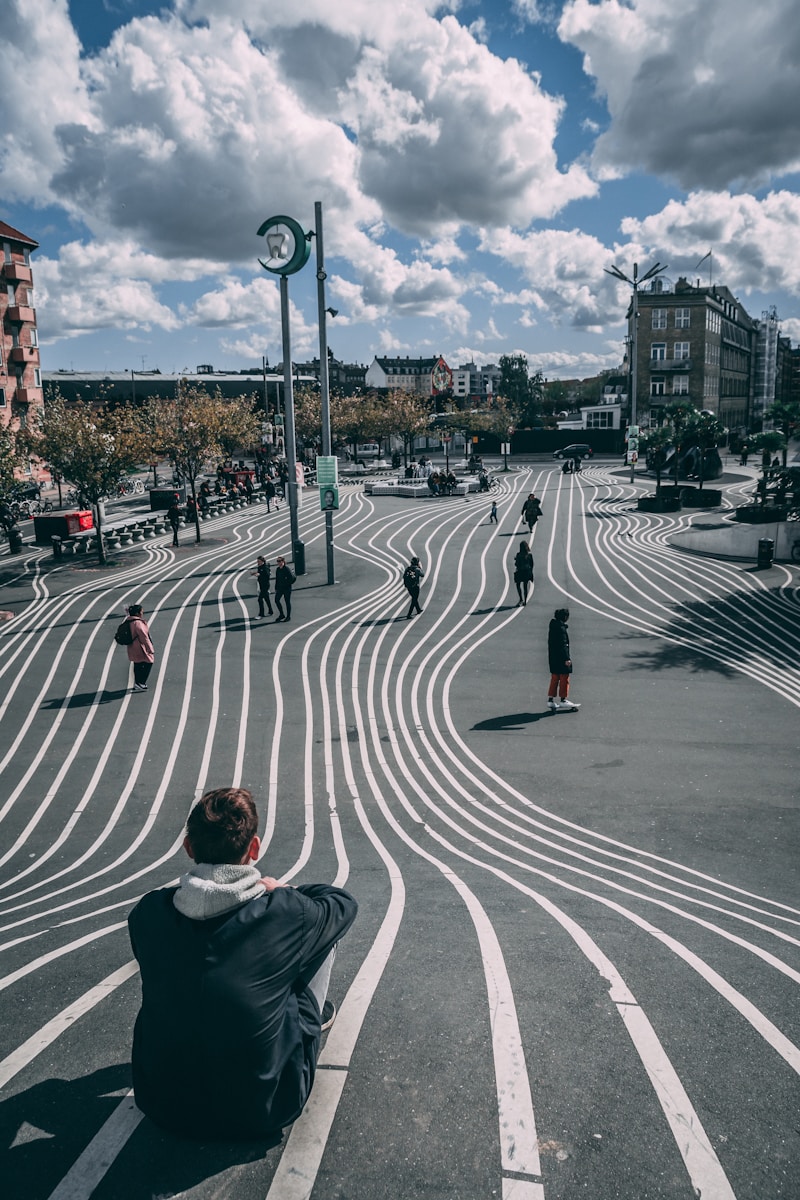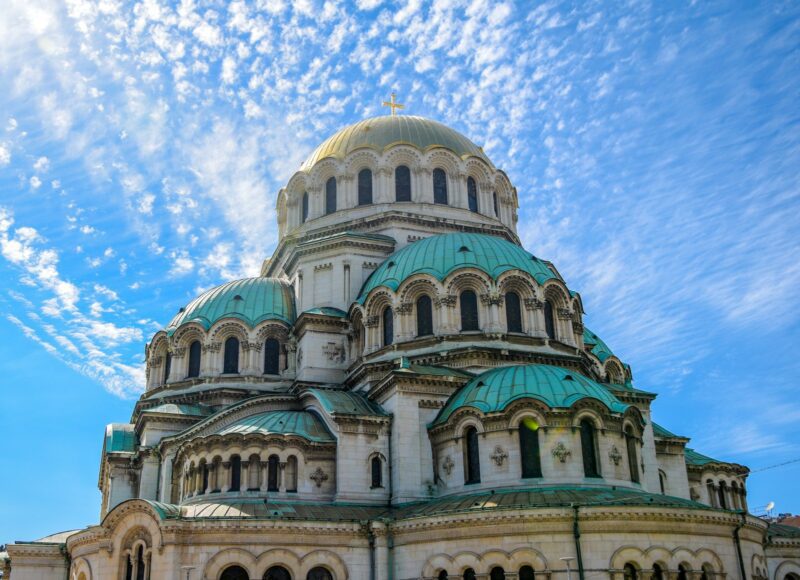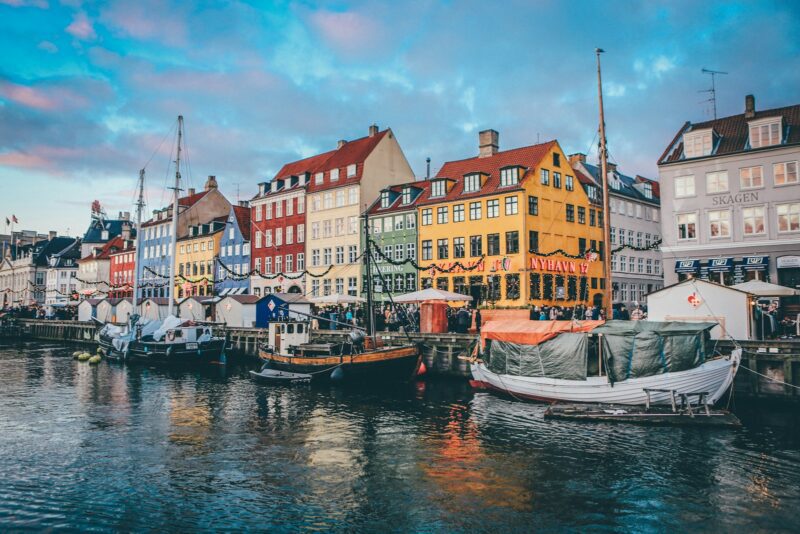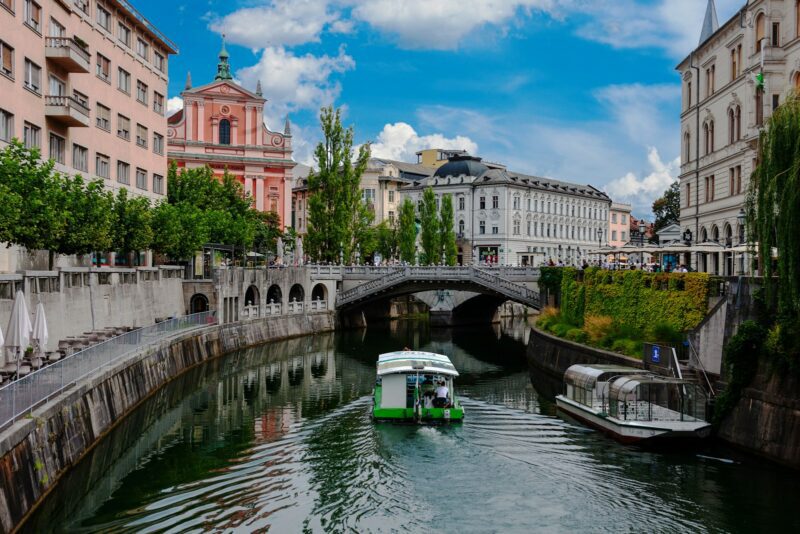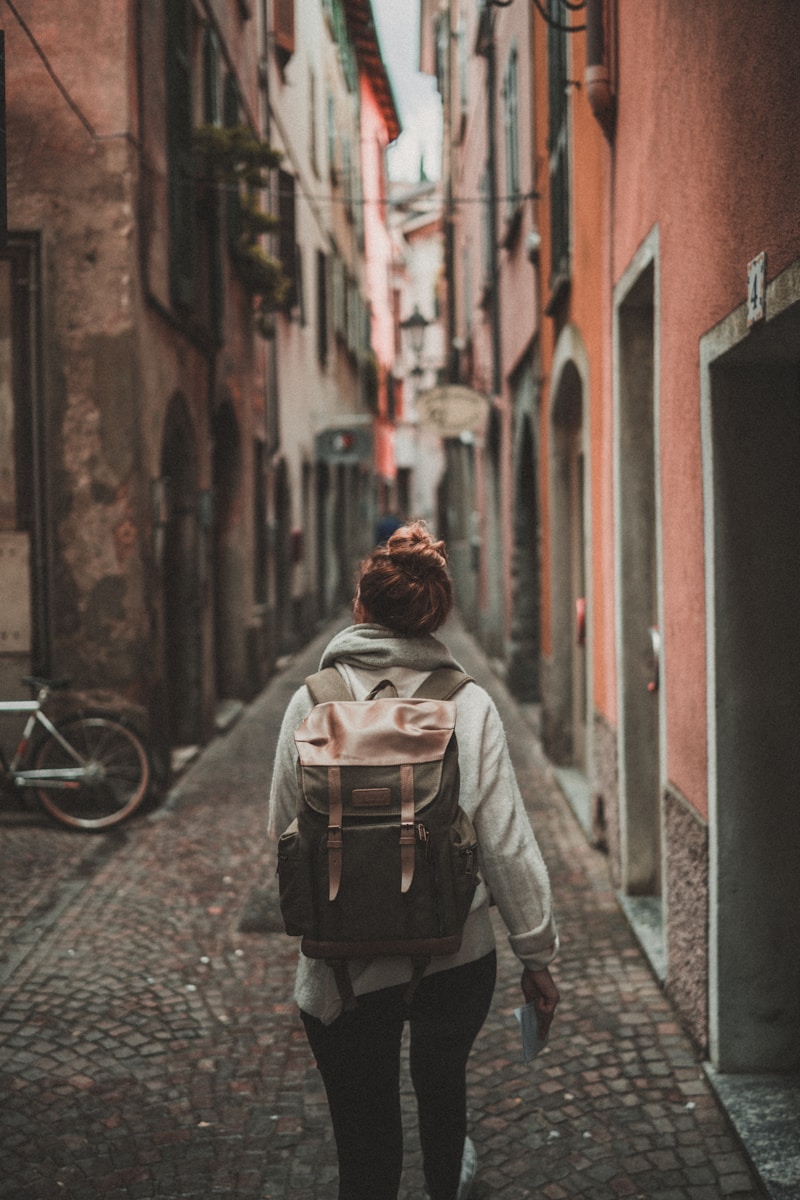Europe is widely regarded as a treasure trove of cultural history, scenic beauty, and culinary delights, contributing to its status as one of the most popular travel destinations in the world. For many travelers, safety is a key consideration when planning trips, and Europe is home to several countries that consistently rank high for safety and security. Assessing the safety of a country often involves looking at crime rates, political stability, and health care quality. This post will teach you about some of the safest European countries and how to properly assess safe areas of travel.
While individual experiences can vary, and unexpected events can happen anywhere, certain European countries are renowned for their safety, which can be measured using indices such as the Global Peace Index. Travelers often inquire about the safest European countries, whether exploring the serene landscapes of Scandinavia, the historic streets of Central Europe, or the sunny coasts of the Mediterranean. Understanding the various aspects of what makes these destinations safe is crucial, including everything from emergency services and infrastructure to cultural norms and the reception of solo and female travelers.
Table of Contents
ToggleKey Takeaways
- Safety assessments include crime rates, political stability, and availability of healthcare.
- Certain European countries are distinguished for their safety as per the Global Peace Index.
Understanding the Global Peace Index
The Global Peace Index (GPI) is an annual report that measures the relative position of nations’ and regions’ peacefulness. Developed by the Institute for Economics and Peace (IEP), the GPI helps travelers understand countries’ safety through various indicators.
Key Indicators of Safety
The GPI assesses peace in a nation through three main domains:
- Societal Safety and Security: This includes the level of domestic and international conflict, the degree of safety within society, and the incidence of violent crime.
- Ongoing Domestic and International Conflict: It measures internal and cross-border wars, deaths from organized conflict, and relations with neighboring countries.
- Militarization: Factors like military expenditure, armed services personnel rates, and weapons imports are measured.
These domains are quantified using 23 indicators, combining both qualitative data from varied sources and quantitative data.
Top Safest European Countries

Europe boasts some of the world’s most peaceful nations, with a few standing out due to their exceptionally low crime rates and high safety measures. These countries have consistently ranked highly for safety and offer a secure environment for both residents and travelers.
Iceland
Iceland is frequently celebrated as one of the safest European countries, renowned for its low crime rate. The feeling of safety is ingrained in the nation’s culture, largely due to its small population that fosters a close-knit community.
Switzerland
Switzerland is not only known for its neutrality but also for its remarkably low levels of violent crime, making it one of the safest countries to visit or live in Europe. High living standards and effective law enforcement contribute to the nation’s status as one safest European countries.
Finland
Finland takes pride in being one of the safest European countries, with a strong emphasis on social welfare and community trust. They have a very low rate of violent crime, and Finnish police are well-respected and approachable.
Austria
Austria’s safety credentials are high on the list, largely as a result of its low crime rate. Austrians enjoy a secure lifestyle, and the country’s proactive approach to crime prevention is a model for others to emulate.
Denmark
Denmark features an impressive safety record with a low crime rate that reflects the country’s peaceful atmosphere. The Danish police are efficient and corruption is almost non-existent, contributing to Denmark’s position as one of the safest European countries.
Safety in Popular European Capitals
When considering European travel destinations, tourists often inquire about the safety of the major capital cities they plan to visit. It is of primary interest to know the crime rate and overall security offered to travelers.
Copenhagen
Copenhagen, the capital of Denmark, is heralded for its high safety standards. Travelers can revel in the city’s cultural offerings with peace of mind, as Copenhagen boasts a low crime rate and a reputation for being one of the safest cities in Europe. The city’s emphasis on community-oriented living contributes to this secure environment.
Vienna
Vienna, the Austrian capital, consistently ranks high on global safety indexes. With a well-regarded police presence and low violent crime rates, Vienna beckons tourists seeking a mix of historic charm and safety. The city maintains meticulous public spaces and takes pride in offering a secure atmosphere for its visitors.
Dublin
Ireland’s capital, Dublin, offers a memorable experience for travelers, coupling its rich literary history with a strong sense of security. The city is generally considered safe for tourists, although as with any major city, it’s prudent to stay alert in crowded areas. Dublin’s friendly ambiance is one of the reasons travelers often feel at ease exploring its streets.
Ljubljana
Ljubljana, though less known than other European capitals, has been gaining recognition for its safety and cleanliness. Slovenia’s capital has a remarkably low crime rate, and travelers can enjoy the city’s picturesque architecture and green spaces without the worry that often comes with travel safety concerns. Ljubljana’s compact size also makes it easy to navigate and contributes to its safe, community feel.
Emerging Safe European Destinations
Travelers looking for peace of mind and natural beauty can find both in several up-and-coming safe European destinations. Here is a closer look at some of the top countries providing a secure atmosphere for tourists.
Portugal
Portugal has been ranked as one of the safest countries for travelers in 2024. Visitors are drawn to its stunning coastal landscapes, rich cultural heritage, and friendly locals. Portugal’s commitment to maintaining a high level of safety for tourists makes it an alluring destination for those seeking both adventure and tranquility.
Slovenia
Largely untouched by mass tourism, Slovenia is a hidden gem known for its pristine natural environments and tranquil vibe. Slovenia possesses a mosaic of biodiversity, from the peaks of the Julian Alps to the Mediterranean charm of the coast. This country offers not only a safe environment but also a chance to connect with nature away from the crowds. Not only is Slovenia a gorgeous country, it is also notably one of the safefst European Countries.
Czech Republic
The Czech Republic, with its historical cities like Prague and enchanting rural areas, has made significant strides in ensuring tourist safety and satisfaction. Visitors can roam the cobbled streets and explore ancient castles without undue concern for personal safety. Its robust security measures help tourists enjoy the Czech Republic’s blend of history and modernity without worry.
Travel Safety Tips
Even the safest European countries can have some hazzards. When traveling to Europe, prioritizing one’s safety involves being prepared for petty crime, ensuring adequate health coverage, and understanding the potential for natural disasters.
Dealing With Petty Crime
Petty crime such as pickpocketing and minor theft can be common in tourist areas. Travelers should always be vigilant and keep their belongings secure. They are advised to use anti-theft bags and keep valuables like passports and electronics in inner compartments. Additionally, maintaining awareness of one’s surroundings can prevent falling prey to common scams.
Health and Travel Insurance
Before embarking on a trip, travelers should secure comprehensive travel insurance that covers medical expenses. This is crucial as healthcare costs can be considerable for non-residents. Insurance policies should be examined for coverage specifics, including emergency evacuation and repatriation.
Natural Disasters Preparedness
Europe’s risk of natural disasters may vary by region. Tourists should inform themselves about the kinds of natural disasters prevalent in their destinations. For instance, southern European countries may experience wildfires during dry seasons, whereas northern areas might face extreme winter conditions. Staying informed through local news and adhering to government advisories can significantly enhance travelers’ safety.
Safest Countries in Europe for Solo Female Travelers
Traveling solo as a female in Europe can be a rewarding and enriching experience. Europe is deemed to have some of the safest cities for solo female travelers, with destinations like Reykjavik, Iceland offering a blend of safety and vibrant café culture.
While exploring Europe, travelers should take standard safety measures such as:
- Stay Aware: Keeping belongings secure and maintaining awareness of surroundings.
- Limit Intoxication: Drinking less than at home to stay in control.
- Accommodation Security: Choosing safe places to stay with positive reviews from other solo travelers.
When planning a trip, it is recommended to consult the latest travel advisories from reliable sources. This ensures tourists are informed about any potential risks or cultural considerations for the destination they are visiting.
Iceland stands out as a prime example of a safe destination, often lauded for its safety and friendliness towards women travelers. They have a strong safety record, and its capital, Reykjavik, is a hub for tourists seeking both urban and natural wonders.
Ireland is another country that warmly welcomes solo travelers and is known for the hospitality and helpfulness of its locals. Here, one can enjoy the beauty of the Emerald Isle, its cultural heritage, and the friendliness of Irish people.
In Europe, female travelers find that solo journeys can be an experience of freedom, cultural exchange, and personal growth. One’s safety remains paramount, and by following sensible precautions, many women have had positive and fulfilling travel adventures across Europe.
Best and Safest European Countries for Digital Nomads
Europe boasts a wealth of cities that cater to digital nomads seeking safe and vibrant environments suitable for remote work. Among the top options, Budapest, Hungary stands out for its affordability and welcoming atmosphere toward the nomadic workforce. Not only does Budapest offer cost-effective living, but it also provides ample coworking spaces and a strong sense of community.
- Timisoara, Romania: Known for exceptional internet connectivity, with mobile download speeds averaging 82.69 Mbps and broadband speeds at 207.45 Mbps, Timisoara is quickly becoming a hub for digital nomads. Timisoara’s broadband infrastructure is particularly commendable.
- Budapest, Hungary: A top choice in Europe for its affordability and rich cultural offerings, Budapest also boasts a strong network of remote workers that are drawn to its relaxed lifestyle coupled with vibrant nightlife. Budapest’s appeal to digital nomads remains consistent due to these factors.
For those who seek additional safety, countries like Croatia have introduced digital nomad visas, enhancing their attractiveness by offering legal residence for a certain period. Croatia’s low crime rates and friendly locals contribute to its status as a safe and enjoyable destination for digital nomads.
These European destinations continue to adapt to the needs of digital nomads, shaping their cities to become optimal locales for productive remote work and culturally rich living.
Monitoring Political Stability
- Ukraine: The ongoing conflict in Ukraine has led to a high-level travel advisory, reflecting the significant risks associated with travel to the region. The situation involves military conflict, which presents a continual threat of civil unrest and political instability.
- General Vigilance: In the context of political stability, travelers should be informed about current events and aware that political instability can lead to situations of civil unrest, possibly affecting their safety and travel plans.
Traveler Resources for Ensuring Trip Safety
When planning a trip to Europe, travelers can utilize vital resources to ensure their safety. Reliable updates from the U.S. Department of State and comprehensive safety ratings from GeoSure provide necessary information for cautious planning.
US Department of State Updates
The U.S. Department of State regularly updates travel advisories that can impact travel to Europe. Travelers should check these advisories for the latest safety information concerning their destinations. The advisories range from Level 1 (indicating normal precautions) to Level 4 (advising against all travel). By consulting these updates, travelers can make informed decisions and plan trips responsibly.
GeoSure Safety Ratings
GeoSure provides a user-friendly safety rating system that evaluates various risk factors. They offer safety scores for different countries and even neighborhoods, based on data analytics and AI technology. Scores assess general safety, women’s safety, and other risk categories to help travelers be more prepared and cautious for their journey. Access to GeoSure ratings empowers travelers to identify and mitigate potential risks during their European travel.
Safest European Countries: Frequently Asked Questions
When planning for safe travels in Europe, it’s essential to be informed about the destinations that are recognized for their low crime rates and overall safeness. The following frequently asked questions address specific concerns regarding the safest European countries.
Which European cities are ranked as having the lowest crime rates?
Cities like Reykjavik, Bern, and Vienna often feature in rankings as having the lowest crime rates in Europe, combining strong law enforcement with high living standards.
How do Eurostat rankings determine the safest European countries?
Eurostat rankings assess a country’s safety using criteria such as crime statistics, incidents reported to the police, and surveys on public perceptions of crime within the country. The safest European countries will be determined by the above factors.
Which are considered the safest European countries in Eastern Europe?
Slovenia and the Czech Republic are often cited as the safest European countries for tourists in Eastern Europe based on low crime rates and positive traveler experiences.
What countries appear consistently in the top 20 safest European countries?
Countries like Iceland, Norway, and Switzerland frequently appear among the top 20 safest European Countries in various rankings, thanks to their excellent safety records and stable social and political environments.



